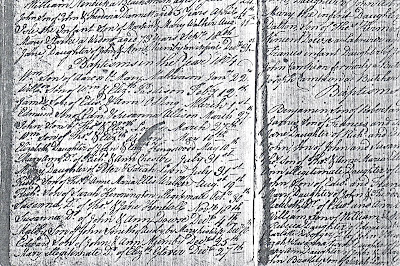We tend to forget how dependent farmers were on horse power (literally) for getting that hay in. The bond between horse and man is evident in this copy of a hand written account I found in the Kennington file today. I believe it came from Forrest Kennington whose cousin, Scott Gardner, is the writer; perhaps it was something to do with the historical society. Wherever it came from, it is too good to pass up:
"August 1993
"This is a story told to me by Harve Crook of Smoot, -91 years old-
"In 1914 his brother Ray Crook had a fine team, one black and one brown. They were well matched and the envy of the whole community. One day they came up missing. They had been stolen.
"Late in the summer Harve crossed the mountain to the Green River Country to work in the hay fields. This was the custom for Star Valley men to do this each summer after their own hay was stacked.
"There was talk of a fine team in the area, one black and one brown. Harve started looking for the team He was told they had been sold to the British Army Horse Buyers. World War I was raging in Europe.
"In 1924 Harve was on an L.D.S. Church mission in Hobart, Tasmania. One day a team and wagon came down the street, one black and one brown. He stopped the driver and examined the horses. They wore his father's brand and the British Army Brand."
[signed] Scott Gardner
"This is a story told to me by Harve Crook of Smoot, -91 years old-
"In 1914 his brother Ray Crook had a fine team, one black and one brown. They were well matched and the envy of the whole community. One day they came up missing. They had been stolen.
"Late in the summer Harve crossed the mountain to the Green River Country to work in the hay fields. This was the custom for Star Valley men to do this each summer after their own hay was stacked.
"There was talk of a fine team in the area, one black and one brown. Harve started looking for the team He was told they had been sold to the British Army Horse Buyers. World War I was raging in Europe.
"In 1924 Harve was on an L.D.S. Church mission in Hobart, Tasmania. One day a team and wagon came down the street, one black and one brown. He stopped the driver and examined the horses. They wore his father's brand and the British Army Brand."
[signed] Scott Gardner

